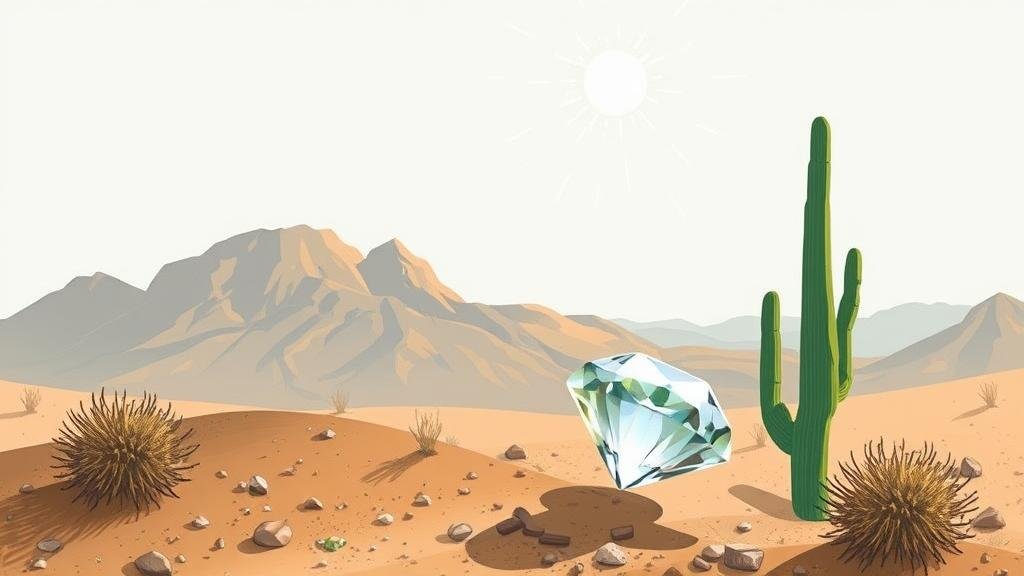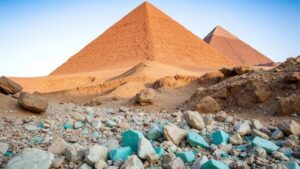The Sparkle of Desert Diamonds: Unearthing Gems in Unexpected Places
The Sparkle of Desert Diamonds: Unearthing Gems in Unexpected Places
For rockhounds and mineral collectors, the phrase diamond in the rough often resonates with the thrill of discovering hidden treasures in unlikely locations. More than just a popular idiom, it aptly depicts the journey many embark upon to find desert diamonds, also known as diamonds in the desert. These striking gems, typically associated with arid landscapes, offer both intrigue and opportunity to enthusiasts willing to dig a little deeper.
What are Desert Diamonds?
Desert diamonds, scientifically known as garnet, are actually a type of mineral belonging to a group of silicate minerals. The most commonly found variety in desert environments is the pyrope garnet. e gemstones exhibit a stunning clarity and brilliance, typically ranging in color from reddish-brown to clear. Interestingly, they can be mistaken for real diamonds, which increases their allure among collectors.
The Geological Formation of Desert Diamonds
The formation of desert diamonds occurs in volcanic rocks and metamorphic environments. Over millions of years, erosion and geological upheavals unearth and expose these gems, making them accessible to those who seek them. In desert regions, factors such as low rainfall, high evaporation rates, and temperature fluctuations contribute to the conditions required for the crystallization of garnet. The process can be likened to finding an oyster in the vast ocean; it requires patience, environmental knowledge, and a bit of luck.
Where to Find Desert Diamonds
Collectors often find desert diamonds in a variety of locations, predominantly in the southwestern United States. Notable sites include:
- The Mojave Desert, California: This area is rich in volcanic rock and has yielded many noteworthy garnet finds.
- The Sonoran Desert, Arizona: Here, erosion has exposed various mineral deposits, including a wealth of garnets.
- The Black Rock Desert, Nevada: Known for its harsh conditions, this desert is another hotspot for gem hunting.
Collecting Tips for Rockhounds
For those eager to add desert diamonds to their collection, here are some practical tips:
- Research Local Regulations: Before heading out, familiarize yourself with local laws regarding mineral collection. Some areas may have restrictions or require permits.
- Use the Right Tools: Equipped with a sturdy rock hammer, chisels, and a safety goggles can greatly enhance your collection efforts while ensuring personal safety.
- Identify the Right Season: Early spring and late fall are optimal times for rockhounding in desert regions when temperatures are milder.
- Join a Community: Connecting with local rockhounding clubs or forums can provide vital insights and enhance your collection experience.
The Value of Desert Diamonds
Desert diamonds can vary significantly in value depending on size, color, and clarity. A small piece of rough pyrope garnet can be valued at around $1 per carat, while larger, more flawless specimens can reach prices of $100 or more per carat. In comparison, a similar-sized natural diamond could cost thousands of dollars. This valuation makes garnets an accessible and attractive option for collectors.
Real-World Applications of Desert Diamonds
Beyond their aesthetic appeal, desert diamonds also find a place in various industries. The hardness of garnets, typically rated at 6.5 to 7.5 on the Mohs scale, makes them suitable for use as abrasives in sandblasting and waterjet cutting. Also, the vibrant colors of specific garnets make them a popular choice in jewelry, presenting an opportunity for collectors to bridge the gap between collecting and crafting.
Conclusion: Embracing the Hunt
The pursuit of desert diamonds offers rockhounds an unparalleled combination of adventure, education, and the thrill of discovery. As you explore arid landscapes, remember that each specimen tells its own story–one that spans millions of years and diverse geological processes. So gather your tools, respect the environment, and allow the sparkling allure of desert diamonds to guide your next expedition!



